Should Stairs Match the Floor? – An Expert Advice
When designing or remodeling stairs, one important aspect to consider is the cohesive integration of various design elements. A common design dilemma is should stairs match the floor or present a contrasting aesthetic interior design. ... Read more The post Should Stairs Match the Floor? – An Expert Advice appeared first on Arthitectural.


When designing or remodeling stairs, one important aspect to consider is the cohesive integration of various design elements. A common design dilemma is should stairs match the floor or present a contrasting aesthetic interior design.
Aim for stairs match upstairs or downstairs so that it complements the rest of the interior design of the house. However, it doesn’t need to be the same color as the flooring. Let’s explore the considerations in deciding whether stairs should match the floor.
Flooring Options for Stairs
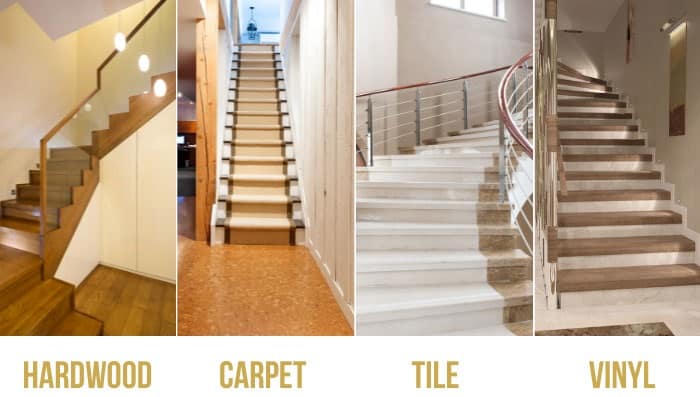
There are several flooring for stairs ideas, depending on your preferences, budget, and the overall style of your home. Here are some common options:
1. Hardwood
Hardwood is a popular choice for stairs, providing a classic and timeless look. It’s durable, easy to clean, and comes in a variety of wood species, finishes, and colors. Its alternative that is worth considering is the laminate wood.
2. Carpet
Carpeting stairs can provide comfort, reduce noise, and create a warm and cozy feel. It’s important to select a carpet designed for stairs to ensure durability.
3. Tile
Tiles are a versatile option for stairs, especially in areas with high traffic or where moisture may be a concern. They come in various sizes, textures, and colors, allowing for customization to suit your style.
However, keep in mind that tiles can be slippery, so it’s advisable to choose textured or non-slip varieties.
4. Vinyl
Vinyl flooring has become increasingly popular due to its durability, affordability, and low maintenance. It’s available in a wide range of styles, including wood and stone looks, making it suitable for various stair designs.
| Types of Flooring Upstairs or Downstairs | Types of Flooring For Stairs |
| 1. Hardwood floors | Hardwood stairs |
| 2. Carpet floors | Carpet stairs |
| 3. Tile floors | Tile stairs |
| 4. Vinyl floors | Vinyl stairs |
Pros and Cons of Matching Stairs and Floors
Check out the following options as we provide comprehensive views on whether you should use flooring of the stairs different color than floor or follow the same shades, depending on materials, house decor, budgets, and more.
1. Hardwood
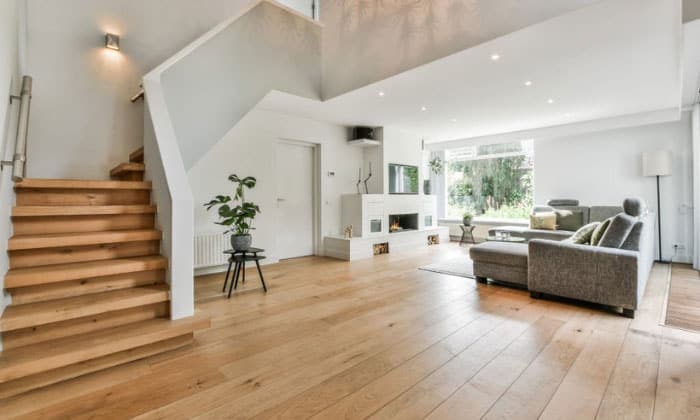
Advantages
- Aesthetically pleasing: It can create a seamless and elegant appearance, enhancing the overall design and visual appeal of the space.
- Continuity: You can achieve a smooth transition between two different wood floors throughout the different levels of your home.
- Durability: Hardwood is a durable flooring material that can withstand heavy foot traffic, making it a practical choice for stairs.
Disadvantages
- Cost: Hardwood is generally more expensive compared to other flooring options, so matching stairs and floors with hardwood can be a significant investment.
- Installation complexity: Installing this requires skilled craftsmanship and may involve additional labor and costs.
2. Carpet
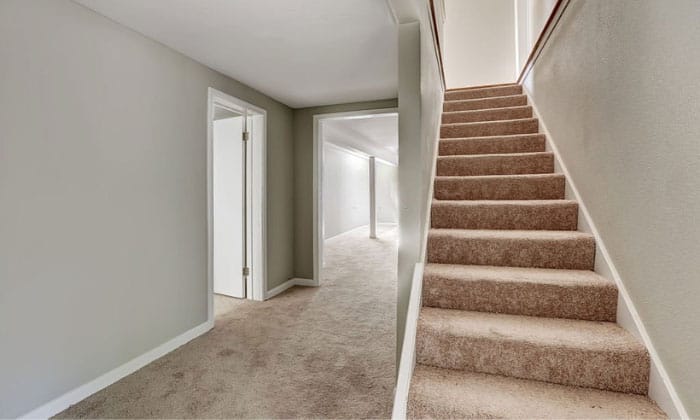
Advantages
- Comfort and safety: It can provide a soft and comfortable surface underfoot, reducing the risk of slips and falls.
- Sound insulation: Carpeting helps to absorb sound, reducing noise transmission between floors and creating a quieter environment.
- Versatility: It comes in a wide range of colors, patterns, and textures, allowing you to customize the look of your stairs and floors to suit your style.
Disadvantages
- Maintenance: Carpeted stairs are more prone to wear and tear, especially in high-traffic areas. Regular cleaning and maintenance are necessary to keep them looking their best.
- Allergies and cleanliness: It can trap dust, allergens,and stains, requiring more frequent cleaning compared to hard surfaces.
- Durability: Over time, carpet fibers can wear down on stairs due to foot traffic, requiring replacement or repairs.
3. Tiles
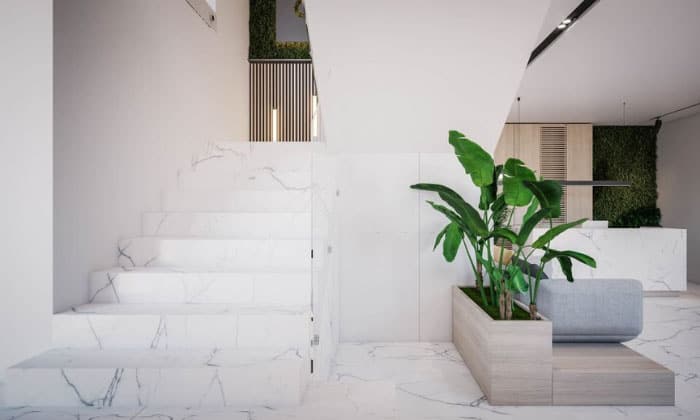
Advantages
- Water resistance: This match is an excellent choice for areas prone to moisture, such as entryways, bathrooms, or kitchens, as tile is highly water-resistant.
- Durability: Tiles are generally durable and can withstand heavy use, making them a suitable option for stairs.
- Design flexibility: It comes in various colors, patterns, and textures, offering numerous design options to match your style and create a cohesive look.
Disadvantages
- Cold and hard surface: Tiles can be cold underfoot, which may not be desirable in colder climates or for individuals who prefer warmer flooring options.
- Slippery when wet: Some types of tile can be slippery when wet, posing a potential safety hazard on stairs. It’s important to choose tiles with appropriate slip resistance.
- Installation challenges: Properly installing tile on stairs can be more challenging compared to flat surfaces, requiring specialized techniques and expertise.
4. Vinyl
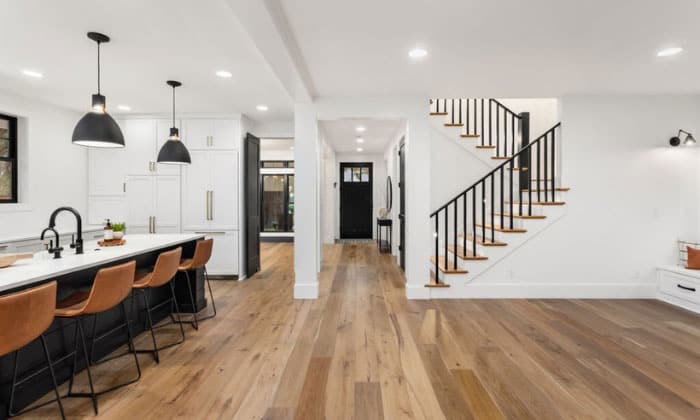
Advantages
- Seamless transition: By using this, you can achieve a smooth and seamless transition between the two areas. This creates a more open and spacious feel in the room.
- Easy maintenance: When the flooring material is consistent, it becomes easier to clean and maintain. Regular sweeping and occasional mopping are usually sufficient to keep it in good condition.
- Cost effective: This can be cost-effective since you can purchase the material in large quantities, potentially getting better deals or discounts. It can also reduce installation costs if the same professional is handling both areas.
Disadvantages
- Durability concerns: This match might result in faster deterioration of the stairs, compromising their appearance and longevity.
- Safety considerations: This type of flooring may not have the necessary slip-resistant properties for stairs, potentially increasing the risk of accidents.
Factors to Consider When Matching Stairs and Floors
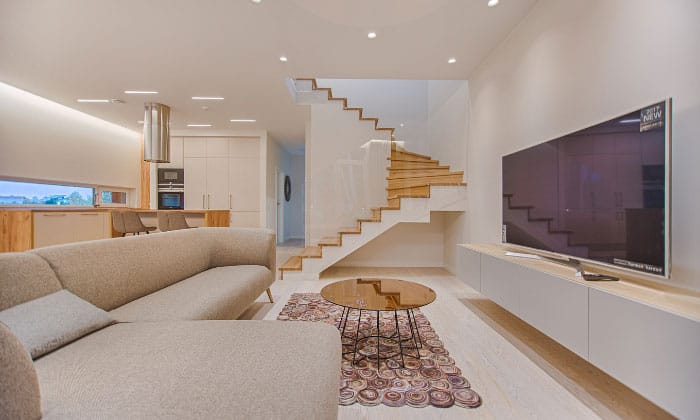
When matching stairs and floors, there are several factors to consider to ensure a cohesive and aesthetically pleasing design. Here are some important factors to keep in mind:
- Material and Color: You’ll want to choose materials and colors for stairs that complement each other and create a harmonious look despite having different color floors in the house.
- Style and Design: For example, if you have a traditional hardwood floor, you may opt for classic wooden stairs with similar detailing. On the other hand, if you have a modern, minimalist floor, you might choose sleek, clean-lined stairs to match.
- Transition and Continuity: Pay attention to the transition between the stairs and floors to ensure a seamless flow.
Ideally, the materials and colors should transition smoothly from one to the other. This can be achieved through using a transition strip or molding to create a defined edge between the stairs and the floor.
- Maintenance and Cleaning: Different materials require varying degrees of maintenance and cleaning. Consider how easy it is to clean and maintain both the stairs and the floors. For example, carpeted stairs may require more frequent vacuuming, while hardwood stairs may need occasional refinishing.
- Budget: Finally, your budget will play a significant role in the decision making process. Some materials may be more expensive than others, so it’s essential to consider the cost of both the stairs and the floors and find a balance that suits your budget while achieving the desired look.
Tips on Coordinating Stairs and Floors
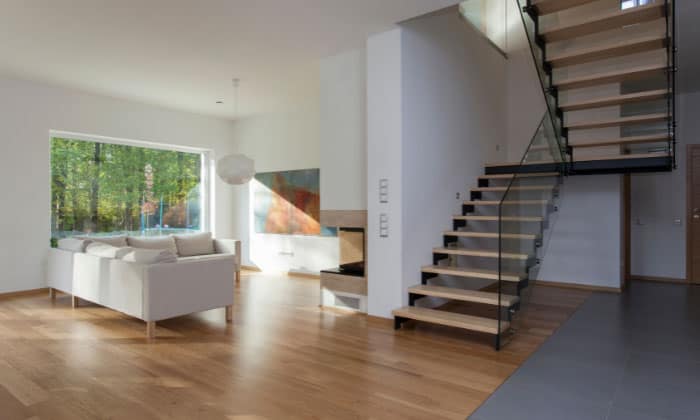
Coordinating stairs and floors involves paying attention to colors, texture, patterns, and stair accessories. Here are some tips to help you achieve a cohesive and well-coordinated look:
1. Color Coordination
Using complementary floor and stair colors is a good choice. You can either opt for a similar shade or go for contrasting colors to create visual interest. Just maintain consistency throughout the staircase and the flooring to create a seamless transition.
2. Texture
Consider matching the textures of the stairs and floors. For example, if you have a hardwood floor, you can choose stairs with a similar wood grain texture. Alternatively, you can create a contrast by using a smooth, sleek staircase against a textured floor.
3. Pattern
- Cohesive Patterns: If you have a patterned floor, consider choosing a carpet that complements or coordinates with the pattern.
- Subtle Patterns: If your floor has a bold or intricate pattern, consider keeping the stair design more understated to avoid visual overload. A solid color or a simple, subtle pattern on the stairs can provide a balanced look.
4. Stair Accessories
- Balusters and handrails should match or coordinate with the overall style and material of the stairs and floors. For instance, if you have a contemporary style, sleek metal balusters may work well, while traditional wooden balusters can complement a classic style.
- For stair nosing, choose a material and finish that matches or complements the flooring for a cohesive look.
- Consider incorporating stair lighting to enhance the aesthetic appeal and safety of the staircase.
The Case for Matching Stairs and Floors
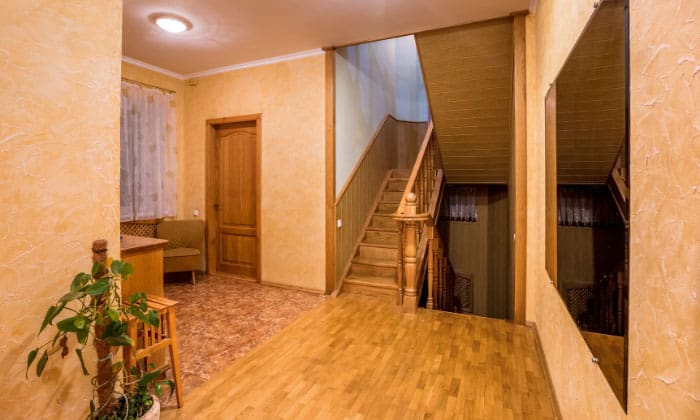
Matching stairs and floors creates visual continuity and a cohesive design.
In doing so, it’s important to extend the concept to stair railings as well. To create a seamless look, match stair railings with new flooring. Explore various flooring ideas for stairs to find the perfect combination that enhances the overall aesthetic of your home.
The Case Against Matching Stairs and Floors
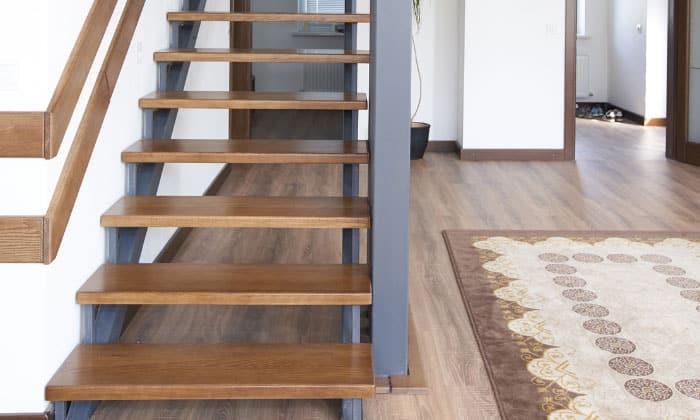
When it comes to the design of your home, one challenge you may face is when the wood stairs don’t match the floor.
- To create a cohesive look, consider match stairs to laminate flooring. This can help overcome the issue of having stairs different stain than floor.
- Additionally, if you have different flooring upstairs and downstairs, it’s important to find a harmonious balance. For stairs darker than floors, or if stairs and floor different in color, you can create an interesting contrast.
For example, dark stairs with light floors can add depth to your design.
- Another option is to opt for lightwood stairs, which can brighten up the space. If you’re changing stairs from carpet to wood, it provides an opportunity to create a cohesive look with the rest of the flooring.
Remember to consider the color coordination between the stairs and the floor to ensure a unified and visually pleasing design.
Frequently Asked Questions
How can I make my stairs safer?
Install proper handrails, provide sufficient lighting, ensure non-slip surfaces, and add grip-enhancing stair treads for increased safety.
Are matching stairs and floors suitable for all home styles?
Matching stairs and floors can suit various home styles, but contrasting options can also add visual interest and uniqueness.
How much does it cost to match my stairs and floors?
The cost of matching stairs and floors varies based on materials chosen, labor, and complexity, making it difficult to provide a specific estimate.
Conclusion
Hence, “Should Stairs Match the Floor?” is a question that invites consideration of personal preference and design objectives. While matching stairs and floors can achieve a cohesive look, contrasting options offer the opportunity for creativity and visual interest.
Ultimately, the decision should be based on factors such as style, budget, and desired aesthetic outcome. The key is to create a harmonious and visually pleasing staircase-floor combination that reflects individual style and enhances the overall appeal of the space.
The post Should Stairs Match the Floor? – An Expert Advice appeared first on Arthitectural.
